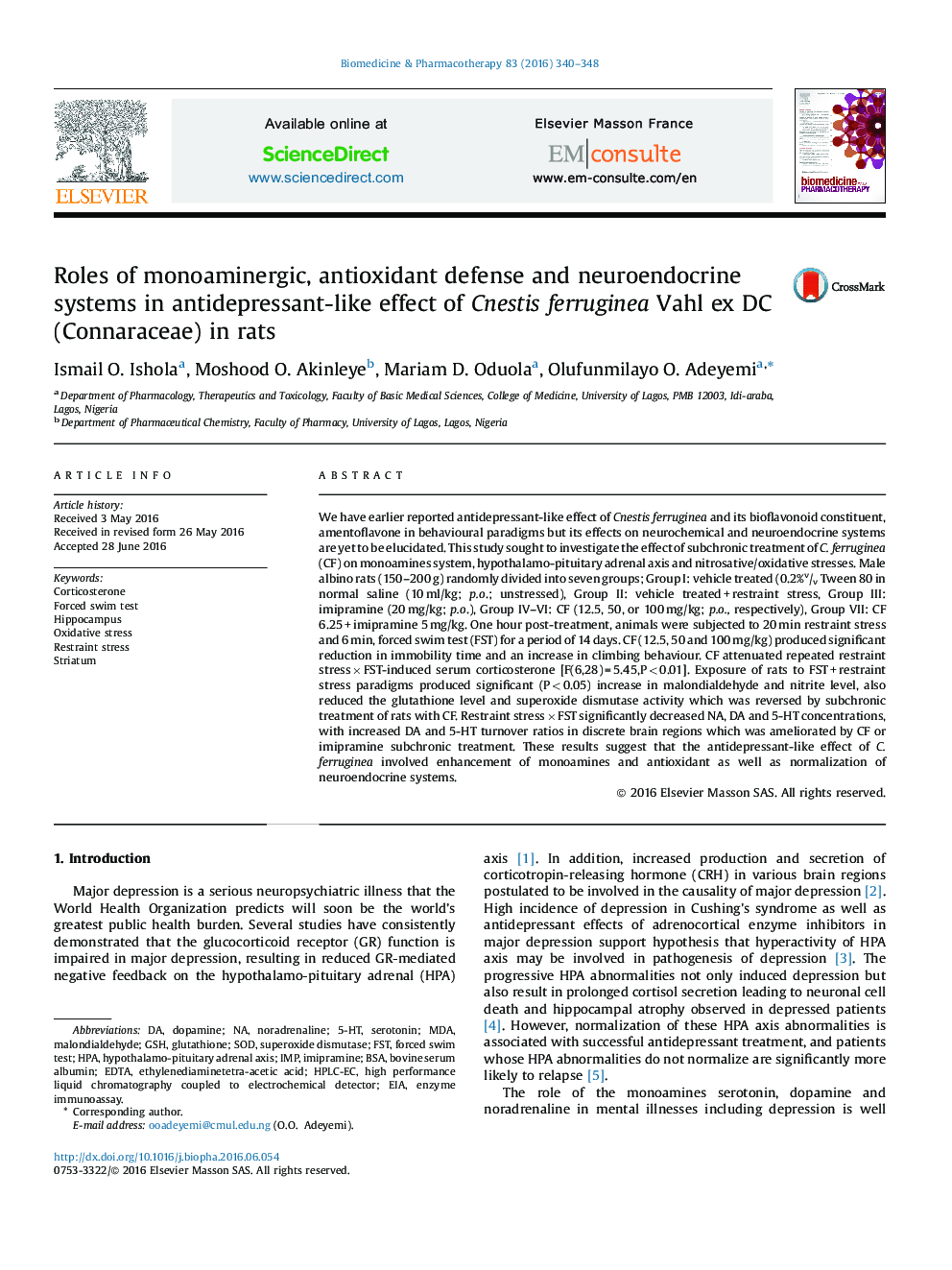| Article ID | Journal | Published Year | Pages | File Type |
|---|---|---|---|---|
| 2524678 | Biomedicine & Pharmacotherapy | 2016 | 9 Pages |
We have earlier reported antidepressant-like effect of Cnestis ferruginea and its bioflavonoid constituent, amentoflavone in behavioural paradigms but its effects on neurochemical and neuroendocrine systems are yet to be elucidated. This study sought to investigate the effect of subchronic treatment of C. ferruginea (CF) on monoamines system, hypothalamo-pituitary adrenal axis and nitrosative/oxidative stresses. Male albino rats (150–200 g) randomly divided into seven groups; Group I: vehicle treated (0.2%v/v Tween 80 in normal saline (10 ml/kg; p.o.; unstressed), Group II: vehicle treated + restraint stress, Group III: imipramine (20 mg/kg; p.o.), Group IV–VI: CF (12.5, 50, or 100 mg/kg; p.o., respectively), Group VII: CF 6.25 + imipramine 5 mg/kg. One hour post-treatment, animals were subjected to 20 min restraint stress and 6 min, forced swim test (FST) for a period of 14 days. CF (12.5, 50 and 100 mg/kg) produced significant reduction in immobility time and an increase in climbing behaviour. CF attenuated repeated restraint stress × FST-induced serum corticosterone [F(6,28) = 5.45,P < 0.01]. Exposure of rats to FST + restraint stress paradigms produced significant (P < 0.05) increase in malondialdehyde and nitrite level, also reduced the glutathione level and superoxide dismutase activity which was reversed by subchronic treatment of rats with CF. Restraint stress × FST significantly decreased NA, DA and 5-HT concentrations, with increased DA and 5-HT turnover ratios in discrete brain regions which was ameliorated by CF or imipramine subchronic treatment. These results suggest that the antidepressant-like effect of C. ferruginea involved enhancement of monoamines and antioxidant as well as normalization of neuroendocrine systems.
